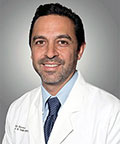- Home
- Foot & Ankle Conditions
- Pediatric Conditions
- Growth Plate Fractures
Growth Plate Injuries: Causes, Symptoms, & Treatment Options
- Published 6/1/2018
- Last Reviewed 12/14/2023

What are Growth Plates?
Growth plates, also known as epiphyseal plates, are soft points on the end of a child's bone that form solid bone as your child matures. Growing bones each have one growth plate at either end.
A suspected injury to the growth plate needs to be evaluated by a specialist right away. An injury to a growth plate can cause it to harden and “close” prematurely, meaning it stops producing new bone before your child is done growing. If left untreated, a growth plate injury could stunt bone growth.
- How common are growth plate injuries?
- How do growth plate fractures of the foot occur?
- What are the symptoms of a fractured growth plate?
- How can the podiatrists at University Foot & Ankle Institute diagnose your child's growth plate injury?
- What are the common types of growth plate fractures?
- What are the treatments for a growth plate foot fracture?
- Recovering from a growth plate fracture
- Choose UFAI for the best pediatric podiatrists
- Growth plate injury FAQs
- Can adults suffer growth plate injuries?
- Can you play soccer on a growth plate ankle injury?
- Does growth plate injury affect height?
- How to prevent growth plate injuries?
- How long does a growth plate injury take to heal?
-
ABFAS® Board Certified in Foot Surgery and Reconstructive Rearfoot and Ankle Surgery. and Director of University Foot and Ankle Institute
Dr. Bob Baravarian DPM, FACFAS is a Board-Certified Podiatric Foot and Ankle Specialist. He is an assistant clinical professor at the UCLA School of Medicine and serves as Director of University Foot and Ankle Institute.
Dr. Baravarian has been involved in athletics his entire life and played competitive tennis in high school and college. He has an interest in sports medicine, arthritis therapy, and trauma/reconstructive surgery of the foot and ankle. He is also fluent in five languages (English, French, Spanish, Farsi, and Hebrew),
-
ABFAS® Board Certified in Foot Surgery and Reconstructive Rearfoot and Ankle Surgery. and Director of University Foot and Ankle Institute
Dr. Bob Baravarian DPM, FACFAS is a Board-Certified Podiatric Foot and Ankle Specialist. He is an assistant clinical professor at the UCLA School of Medicine and serves as Director of University Foot and Ankle Institute.
Dr. Baravarian has been involved in athletics his entire life and played competitive tennis in high school and college. He has an interest in sports medicine, arthritis therapy, and trauma/reconstructive surgery of the foot and ankle. He is also fluent in five languages (English, French, Spanish, Farsi, and Hebrew),
 My wife and I went to play tennis on a Wednesday morning and, within 10 minutes, I experienced the most excruciating pain in m...Duane D.
My wife and I went to play tennis on a Wednesday morning and, within 10 minutes, I experienced the most excruciating pain in m...Duane D. Outstanding staff and medical service providers. Dr. B is succinct and very professional. Thank you very much for the caring!Miguel M.
Outstanding staff and medical service providers. Dr. B is succinct and very professional. Thank you very much for the caring!Miguel M. Very well….Virginia I.
Very well….Virginia I. As a returning patient, they expedited my arrival to exam room, short time for doctor to come ande exam. I find that unusually ...George C.
As a returning patient, they expedited my arrival to exam room, short time for doctor to come ande exam. I find that unusually ...George C. My experience was very good. Dr. Kelman was quick but thorough. He has a good sense of humor and is very pleasant.Isabel B.
My experience was very good. Dr. Kelman was quick but thorough. He has a good sense of humor and is very pleasant.Isabel B. You were recommended by a friend and I will surely pass that to my friends shouldmany be inPhilip M.
You were recommended by a friend and I will surely pass that to my friends shouldmany be inPhilip M. WAS MOST HAPPY WITH DR NALBANDIAN AND HER MALE ASST. THAT DAY. I WOULD RECOMMEND THIS DR AND HER ASST ANYTIME!Marguerite S.
WAS MOST HAPPY WITH DR NALBANDIAN AND HER MALE ASST. THAT DAY. I WOULD RECOMMEND THIS DR AND HER ASST ANYTIME!Marguerite S. He is informed,smart and current in information. Helped me a lot. Recommended Medicine for my toe nails,he cultured first and m...Theresa M.
He is informed,smart and current in information. Helped me a lot. Recommended Medicine for my toe nails,he cultured first and m...Theresa M. Would rather deal directly with the local office.Andrea G.
Would rather deal directly with the local office.Andrea G. Dr. Johnson is terrific: competent, caring, and communicative. Also, he shows he is a real human, not just filling a role of do...Sharon S.
Dr. Johnson is terrific: competent, caring, and communicative. Also, he shows he is a real human, not just filling a role of do...Sharon S. Your staff are always caring and professional.
Your staff are always caring and professional.
I like Dr Bob and Dr Gina very much.Linda T. You guys are really good over there. Okay, I love my doctor jafari. He's very knowledgeable. Makes me feel comfortable and yeah...David J.
You guys are really good over there. Okay, I love my doctor jafari. He's very knowledgeable. Makes me feel comfortable and yeah...David J.
